Related Research Articles

Year 1323 (MCCCXXIII) was a common year starting on Saturday of the Julian calendar.
Treaty of Paris may refer to one of many treaties signed in Paris, France:
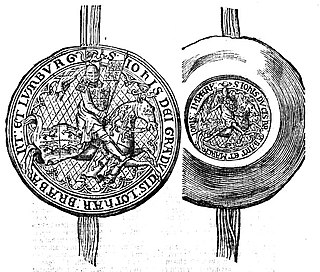
John III was Duke of Brabant, Lothier (1312–1355) and Limburg. He was the son of John II, Duke of Brabant, and Margaret of England.

Floris V reigned as Count of Holland and Zeeland from 1256 until 1296. His life was documented in detail in the Rijmkroniek by Melis Stoke, his chronicler. He is credited with a mostly peaceful reign, modernizing administration, policies beneficial to trade, generally acting in the interests of his peasants at the expense of nobility, and reclaiming land from the sea. His dramatic murder, engineered by King Edward I of England and Guy, Count of Flanders, made him a hero in Holland.
The count of Flanders was the ruler or sub-ruler of the county of Flanders, beginning in the 9th century. Later, the title would be held for a time, by the rulers of the Holy Roman Empire and Spain. During the French Revolution, in 1790, the county of Flanders was annexed to France and ceased to exist. In the 19th century, the title was appropriated by Belgium and granted twice to younger sons of Belgian kings. The most recent holder died in 1983.

The Hook and Cod wars comprise a series of wars and battles in the County of Holland between 1350 and 1490. Most of these wars were fought over the title of count of Holland, but some have argued that the underlying reason was because of the power struggle of the bourgeois in the cities against the ruling nobility.

The Eighty Years' War or Dutch Revolt was an armed conflict in the Habsburg Netherlands between disparate groups of rebels and the Spanish government. The causes of the war included the Reformation, centralisation, taxation, and the rights and privileges of the nobility and cities.

The County of Hainaut, sometimes spelled Hainault, was a territorial lordship within the medieval Holy Roman Empire that straddled what is now the border of Belgium and France. Its most important towns included Mons, now in Belgium, and Valenciennes, now in France.
John II was Count of Hainaut, Holland, and Zeeland.

William the Good was count of Hainaut, Avesnes, Holland, and Zeeland from 1304 to his death.
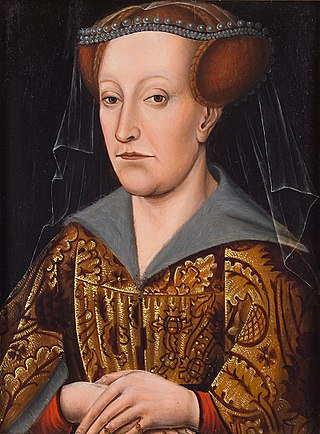
Jacqueline, of the House of Wittelsbach, was a noblewoman who ruled the counties of Holland, Zeeland and Hainaut in the Low Countries from 1417 to 1433. She was also Dauphine of France for a short time between 1415 and 1417 and Duchess of Gloucester in the 1420s, if her marriage to Humphrey, Duke of Gloucester, is accepted as valid.

The County of Holland was a state of the Holy Roman Empire and from 1433 part of the Burgundian Netherlands, from 1482 part of the Habsburg Netherlands and from 1581 onward the leading province of the Dutch Republic, of which it remained a part until the Batavian Revolution in 1795. The territory of the County of Holland corresponds roughly with the current provinces of North Holland and South Holland in the Netherlands.
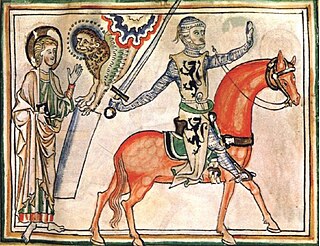
Guy of Dampierre was the Count of Flanders (1251–1305) and Marquis of Namur (1264–1305). He was a prisoner of the French when his Flemings defeated the latter at the Battle of the Golden Spurs in 1302.

The Flemish peasant revolt of 1323–1328, sometimes referred to as the Flemish Coast uprising in historical writing, was a popular revolt in late medieval Europe. Beginning as a series of scattered rural riots in late 1323, peasant insurrection escalated into a full-scale rebellion that dominated public affairs in Flanders for nearly five years until 1328. The uprising in Flanders was caused by excessive taxations levied by the Count of Flanders Louis I and by his pro-French policies. The insurrection had urban leaders and rural factions, which took over most of Flanders by 1325.

The Burgundian Circle was an Imperial Circle of the Holy Roman Empire created in 1512 and significantly enlarged in 1548. In addition to the Free County of Burgundy, the Burgundian Circle roughly covered the Low Countries, i.e., the areas now known as the Netherlands, Belgium and Luxembourg and adjacent parts in the French administrative region of Nord-Pas-de-Calais. For most of its history, its lands were coterminous with the holdings of the Spanish Habsburgs in the Empire.
Ada was Countess regnant of Holland between 1203 and 1207, ruling jointly with her husband, Louis II of Loon. She was deposed and exiled by her paternal uncle, William I.

The County of Zeeland was a county of the Holy Roman Empire in the Low Countries. It covered an area in the Scheldt and Meuse delta roughly corresponding to the modern Dutch province of Zeeland. The County of Zeeland did not include the region of Zeelandic Flanders which was part of Flanders; conversely, the modern Province of Zeeland does not include Sommelsdijk, historically part of the County of Zeeland.
Floris de Voogd "the guardian" of Holland, son of Floris IV, Count of Holland (1210–1234) and Matilda of Brabant. He reigned temporarily for William II of Holland while the latter was engaged in Germany. After King William's death in 1256 he was guardian of Floris V, Count of Holland, son of William. He is sometimes referred to as "Florentius tutor".
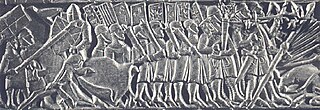
The Franco-Flemish War was a conflict between the Kingdom of France and the County of Flanders between 1297 and 1305.
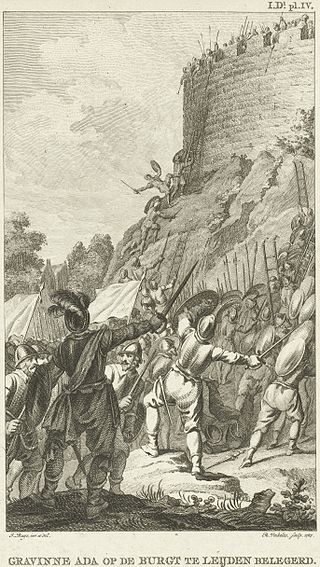
The Loon War was a war of succession over the County of Holland from 1203 until 1206, brought on by the death of count Dirk VII. The war was waged between Dirk's brother William of Frisia, and Dirk's daughter Ada who had quickly married count Louis II of Loon.
References
- ↑ Edmundson, George (1911). . In Chisholm, Hugh (ed.). Encyclopædia Britannica . Vol. 10 (11th ed.). Cambridge University Press. pp. 478–480, see page 480.
Under Louis of Never.....&....a treaty signed on the 6th of March 1323, by which West Zeeland was assigned to the count of Holland, the rest to the count of Flanders....